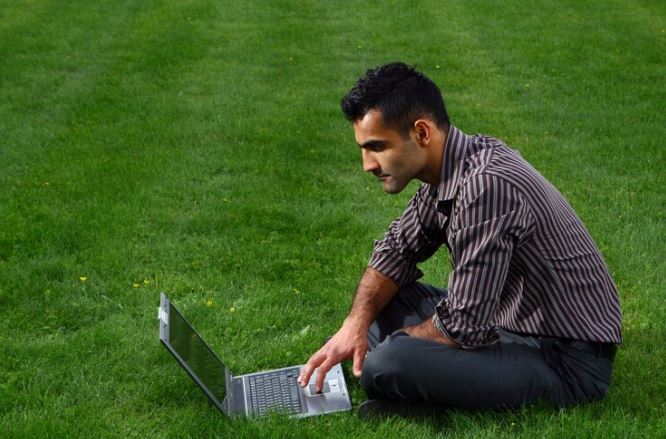Providing Discount Landscape
The Environmental Benefits of Artificial Grass: Dispelling Myths

Many questions have been raised about the manufacturing and environmental impact of artificial grass installations. Where there are questions and doubts among people, there are also some myths about synthetic grass as well. On the contrary, synthetic turf can actually be a more eco-friendly option compared to traditional lawns.
Let’s look at the environmental benefits of the artificial grass installation and debunk the myths.
Addressing Common Misconceptions:
Myth: Artificial grass production is not eco-friendly.
The truth is, many manufacturers are now using recycled materials in the production of synthetic turf. Materials like old tires and plastic bottles are given a new life, reducing waste and promoting a circular economy. Additionally, responsible manufacturers are adopting sustainable practices and using renewable resources in the production process.
Myth: Artificial grass runoff pollutes water sources.
When installed correctly with proper drainage systems, artificial turf installation does not contribute to water pollution. In fact, synthetic turf eliminates the need for fertilizers and pesticides, which can contaminate water sources when used excessively on natural grass.
Myth: Artificial grass is difficult to dispose of and contributes to landfill waste.
This is a common misconception. Many manufacturers offer recycling programs for synthetic turf, ensuring that the materials can be repurposed or recycled responsibly at the end of their lifespan. With proper disposal methods, artificial grass installation can be a sustainable choice.
Environmental Benefits of Installing Artificial Grass
Reduced water consumption compared to natural grass
One of the most significant environmental benefits of artificial turf installation is water conservation. Natural or real grass lawns require frequent watering, especially during hot and dry seasons. In contrast, synthetic turf requires no irrigation, resulting in substantial water savings.
Lower use of pesticides and herbicides
Natural grass often requires the use of pesticides and herbicides to maintain its appearance and control weeds and pests. By poisoning soil and water sources, these chemicals can have a negative impact on the environment. With artificial grass, there is no need for such harmful chemicals, making it a safer and more eco-friendly option.
Possibility of manufacturing products with recycled materials
As mentioned earlier, many manufacturers are now incorporating recycled materials into the production of synthetic turf. By doing this, waste is decreased and the circular economy is strengthened.
Promotes biodiversity and habitat preservation
Traditional lawns require extensive landscaping and maintenance, which can disrupt natural habitats and ecosystems. Artificial grass installations, on the other hand, have a minimal impact on the surrounding environment, allowing native plants and wildlife to thrive. Additionally, the water conservation aspect of synthetic turf helps preserve vital resources, indirectly supporting biodiversity and habitat preservation efforts.
Durability and long lifespan
Artificial grass installations are designed to be durable and long-lasting, reducing the need for frequent replacements and minimizing waste over time. With proper maintenance, synthetic turf can last for many years, making it a sustainable choice for residential and commercial landscapes.
People are worried about how artificial grass affects the environment without knowing that artificial grass can actually be better for the environment than real grass lawns.
As long as artificial grass is installed and taken care of properly, it can be a good choice for homeowners and businesses. It helps save water and doesn’t need harmful chemicals. If companies keep using recycled materials and improve manufacturing, artificial grass installation can be a sustainable option that’s better for the environment.
